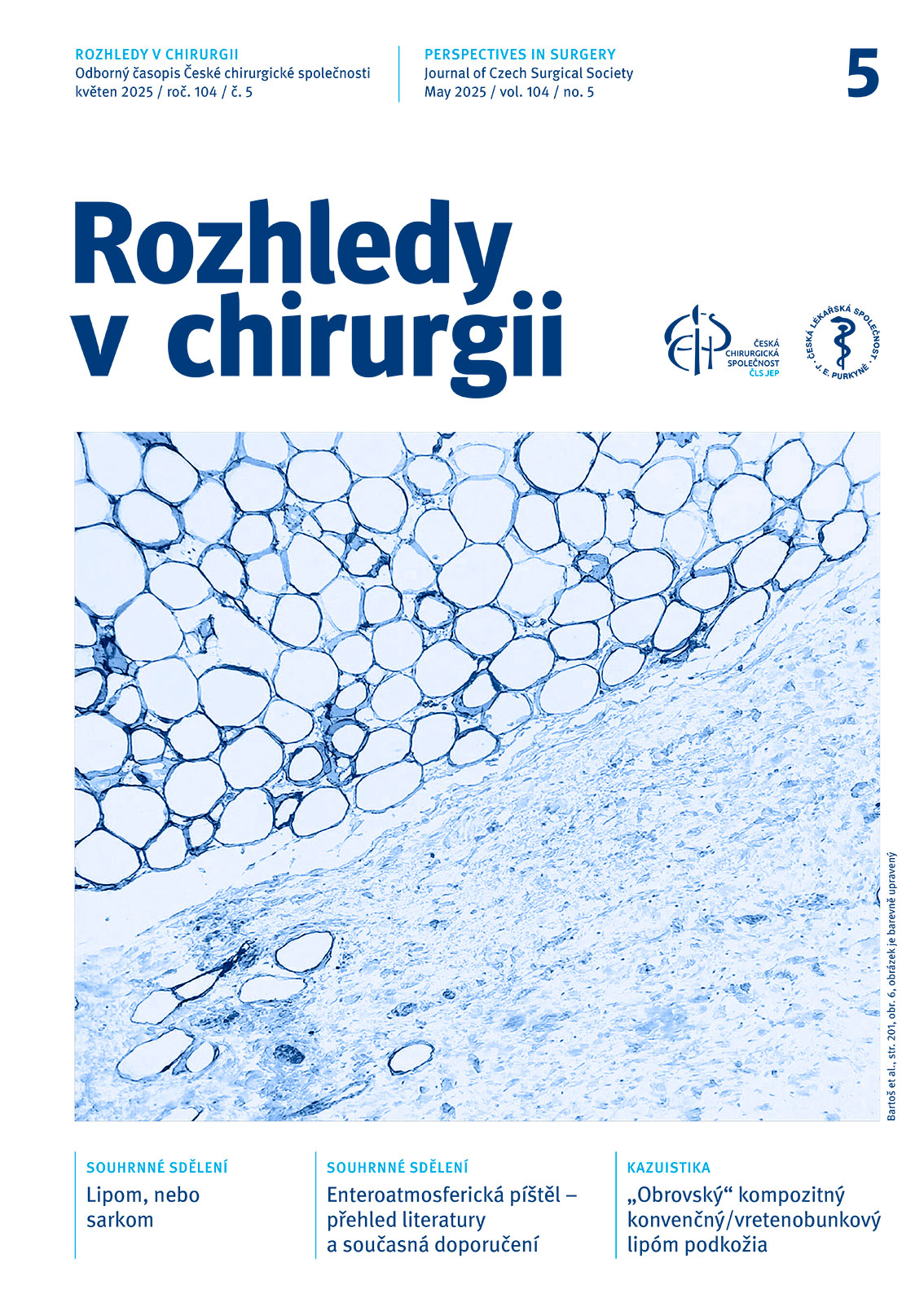Abstract
The patient suddenly experienced shortness of breath, collapse, and loss of consciousness at home. Layperson-performed, telephone-guided cardiopulmonary resuscitation was initiated, and upon the arrival of the emergency medical team, successful extended CPR was performed, after which the patient was transported to the emergency department at Hospital of České Budějovice. Basic stabilization of the clinical condition was carried out, the patient was secured, intubated, and transported to the CT scanner. A massive bilateral pulmonary embolism was verified byCT. Thrombolysis was immediately performed in the emergency room, circulation was stabilized, and the patient was transferred to the ICU.
An hour later, the patient experienced severe circulatory instability in the ICU, requiring high-dose norepinephrine support. Ultrasound was performed, followed by a CT scan of the abdomen, which revealed massive hemoperitoneum. An urgent surgical consultation was performed, and surgery was recommended on a vital indication. An urgent laparotomy was performed on a hemodynamically unstable patient with the blood pressure 60/30 and the pulse 180/min. Despite massive circulatory support and erythrocyte transfusion, 4 liters of noncoagulable blood were drained from the hepatic region. The liver was torn in several places due to fractured ribs, most severely in the left lobe at the hepatic veins. Due to severe circulatory instability, the injury was deemed inoperable, and it was decided to stabilize the condition with perihepatic packing, after which the patient was transferred to the ICU.
The ICU continued conservative therapy, and there was a gradual reduction in the drainage output. A second-look operation was performed after 48 hours – revision of the original wound and removal of the drapes. Multiple fissures were found in the right lobe, caused by broken ribs, with heavy bleeding from the dorsal hepatic veins. A combination of selective suturing and electrocoagulation of the fissures was performed. Due to ongoing circulatory instability, the decision was made to use perihepatic packing once again. The patient was left in the ICU for further circulatory stabilization, with a plan to do another surgical revision after stabilization in 48 hours.
Another surgical revision was performed, revisiting the perihepatic space and performing an anatomical resection of liver segments II and III, followed by selective ligation of the hepatic vein. Hemodynamic stabilization was achieved. Postoperatively, a fluidothorax developed, which was managed by thoracic drainage, and acute acalculous cholecystitis, which was treated with puncture cholecystostomy. The patient is now primarily healed and has been started on long-term anticoagulation therapy by the angiologist. The cause of the pulmonary embolism was not determined.
doi: 10.48095/ccrvch2025211


